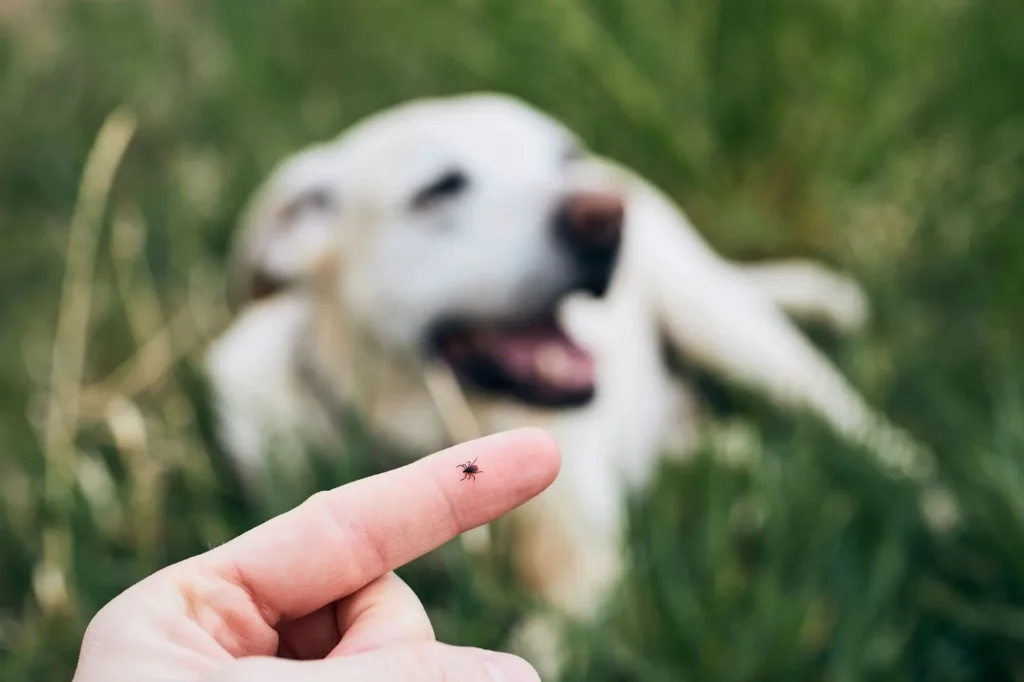As hard as we try, it is near impossible to protect our animals against every possible harm that could be thrown their way. Even if you manage your pet’s diet, exercise, and routine, there are going to be some problems that slip through the cracks. Unfortunately, there are some diseases that are very difficult to prevent or detect, meaning you need an extra set of eyes on your pet at all times. For canines, one of the most common diseases that slip through is Lyme Disease. This disease is tick-born and does not discriminate when it comes to breed or age, so as a dog-owner, you need to be prepared if worse comes to worse. Understanding the basics of Lyme disease can help you protect your pet from this potentially serious condition, so let’s discuss.
If you have any specific questions relating to Lyme or your animal’s health, reach out to Sinton Vet Clinic today! Give us a call at (361) 364-4551, and we would love to give you the information you need. To learn more about our clinic and the services we provide, check out this link.
What is Lyme Disease?
As a dog owner, you have likely heard how Lyme Disease is a threat, and you need to be prepared, but how true is that? Well, if you let your canine enjoy their time outside, the disease may be more of a concern than you may think. Lyme disease is caused by the spirochete bacterium Borrelia burgdorferi, which resides in an infected black-legged tick, AKA the deer tick. The disease manifests in multiple stages, all of which are uncomfortable and painful, and can result in a myriad of symptoms, including, fever, joint pain, and lethargy. When left untreated, the problems can involve kidney damage, heart disease, neurological discrepancies, and even death.
How Lyme Disease Affects Canines
We have established that black-legged ticks are the primary Lyme disease transmitter, but what does the infection process look like? Once the tick has latched onto a part of the dog, usually some hair, it makes its way to the pup’s warm skin so it can take a bite. Once it has taken a bite, the tick will use its mouthparts to anchor itself, making it difficult to remove and impossible to shake off. Then, the parasite inserts a specialized feeding tube directly linked to the host’s bloodstream. If the harmful aforementioned bacteria is carried by the tick, then it will use the feeding tube as a highway into the host. After the bacteria has made its way to the blood, it will begin to replicate and ultimately take over the host’s body, culminating in an infection.
It’s important to note that the transmission of the bacteria from the tick to the host can take some time. In fact, transmission will likely only occur once the tick has been attached and feeding for 24 to 48 hours. Once the disease has been transmitted, your pup will start exhibiting some or all of the following symptoms:
- Lameness: One of the earliest and most noticeable signs is recurrent lameness, which may shift from one leg to another. The lameness is often due to inflamed joints, which is why your dog will try to shift their weight.
- Joint Pain: Dogs with Lyme disease may experience stiffness and pain in their joints, making them reluctant to move or show signs of discomfort while walking or running. Lower leg joint problems are especially noticeable.
- Lethargy: With everything the bacteria is doing to their body, the infected dogs may become lethargic and have reduced energy levels. They may show a lack of interest in regular activities.
- Loss of Appetite: Lyme disease can cause dogs to lose their appetite and become disinterested in food. Take note of consistent changes in their eating habits.
- Fever: Dogs may develop a mild to high-grade fever as their immune system responds to the infection. Since dogs do not sweat like we do, check for especially warm paws and ears, shivering or panting, and behavioral changes.
- Swollen Lymph Nodes: Enlargement of the lymph nodes is a common sign of infection, especially around the site of the tick bite. Look for lumps and newly inflamed areas.
- Sensitivity to Touch: Dogs with Lyme disease may display sensitivity or pain when touched or handled, especially as their body is going through so much. Be gentle and listen to your dog’s cues.
In rare examples, Lyme disease may develop into chronic or long-term problems such as arthritis, kidney damage, and neurological conditions.
With all that being said, there are cases of infected dogs not showing the symptoms we mentioned, or any at all. Whether your pet is showing symptoms or not, perform regular checks, disguised as tummy rubs, of course. If you are concerned about your pet’s health or they are showing symptoms, reach out to our Sinton Vet Clinic ASAP. The sooner Lyme is diagnosed, the sooner your furry friend will be feeling better!
Diagnosis
If you have any concerns or suspicions that your dog may have contracted Lyme disease, contact your veterinarian right away. The only way Lyme disease can be diagnosed is through a veterinarian’s formal diagnosis, making it crucial for your animal’s recovery to seek professional medical advice ASAP. To reach a medical diagnosis, your vet may perform a variety of tests, including a physical exam, bloodwork, and a Lyme disease specific test. If you want to learn more about the specifics of testing, check out this link! The first step to treatment is turning to a trusted professional for their advice, so reach out today to save you worry in the future!

Prevention
To protect your pet from the long-term effects of Lyme disease, prevention is the ultimate form of protection. There are a wide range of prevention options, including topical treatments, collars, or oral medication. There are quite a few products on the market that advertise their repellent qualities, but keep in mind that it is crucial that you read the fine print. For example, do not use feline-specific products unless the label clearly states that it is suitable for dogs. If you do not want to go down the product path, avoid grassy areas and perform regular tick checks. If you are looking for even more protection, you may consider getting your pup vaccinated against Lyme disease and other insect-borne illnesses.
Treatment Options
You have gone through all the motions just to have your canine diagnosed with Lyme Disease, so now what? Involving a trusted veterinarian is a crucial part of the process as their expertise and access will improve your dog’s health. Often, the first step after a diagnosis is to give your animal antibiotics prescribed by your vet, monitoring your pet’s health all the while. In more severe cases, your vet may need to prescribe pain management medication to ensure that your pet is comfortable during the treatment process. Treatment is most beneficial when it is tailored to your furry friend and what they need, so talk with your vet today for a full treatment plan!
Other Animals
Although we have largely focused on the effects Lyme disease has on canines, it is good to have a very basic knowledge of the other animals that can become hosts. Deer in particular are very well-known for being hosts, which is a problem if you live in an area where there are a lot of deer. When there are a lot of options for hosts, the ticks are able to feed off the deer’s blood and grow bigger until it finds our furry friends to latch onto. If you want to learn more about the role that deer play in the tick’s lifecycle, check out this link.
Still Have Questions?
Lyme disease can be a serious concern for pet owners, but by understanding the basics of this condition, you can take steps to protect your furry friend from the potential risks. By using tick prevention products, doing daily tick checks, and seeking prompt veterinary care if you suspect your dog may have Lyme disease, you can help ensure that your pet stays happy and healthy for years to come.
If you have specific questions or concerns, reach out to our experienced staff for answers and advice. Give us a call at (307) 347-2781, and we would love to schedule an appointment. Your pet’s health and wellness is our top priority, so let us know what our Sinton Vet team can do for you and your furry friend.





